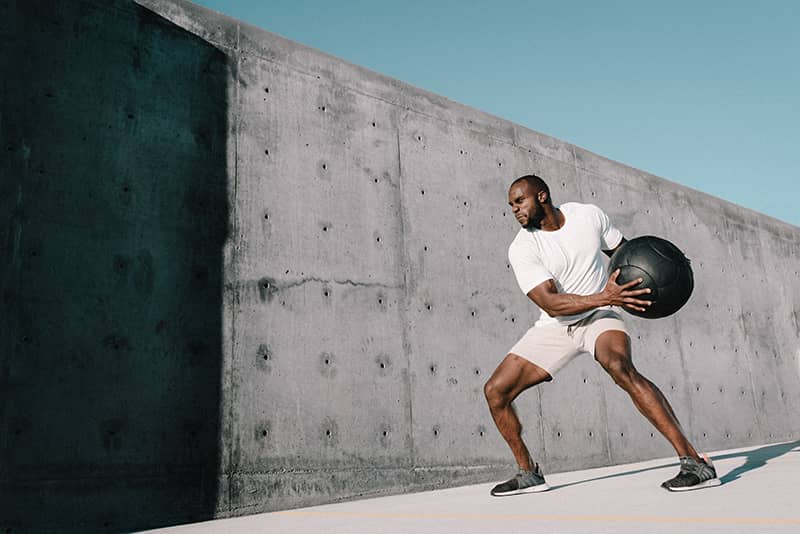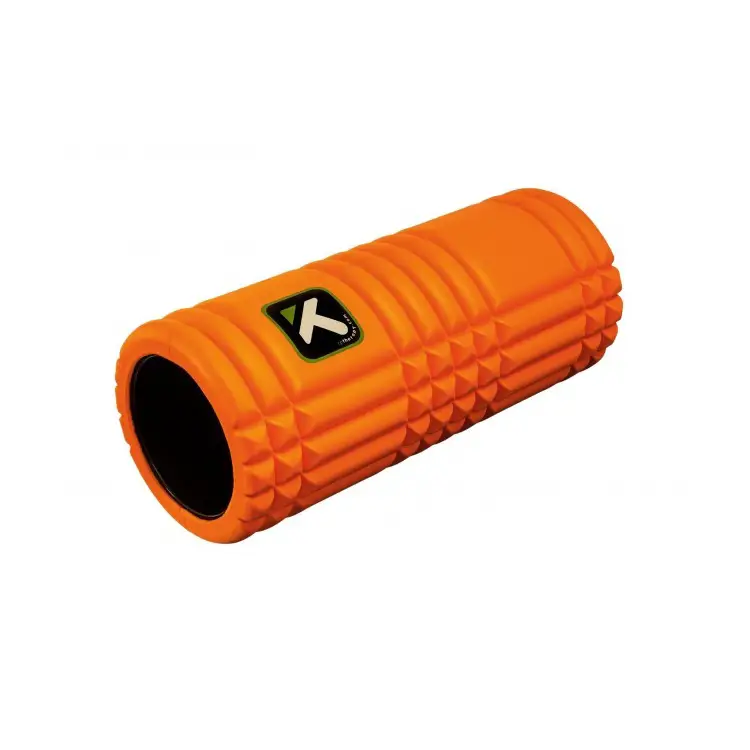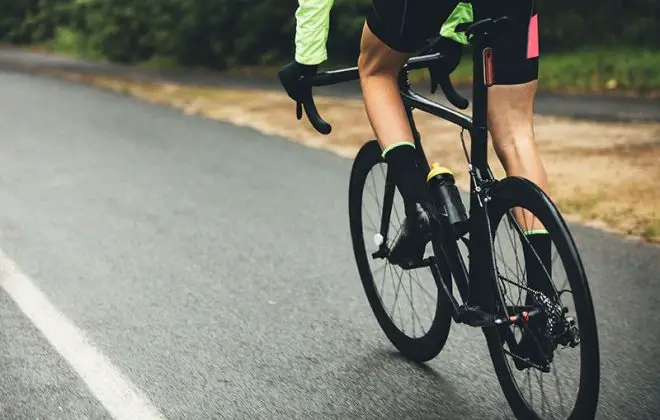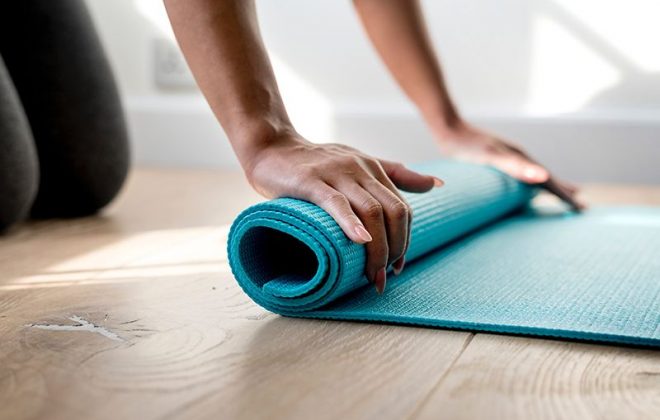7 Surprising Benefits Of Recovery Workouts And Active Rest Days
For an outsider phrases like recovery workouts and active rest days might sound counter-intuitive, if not total nonsense. But for athletes who ‘cracked the code’ of high performance they make all the sense in the world.
But it does sound confusing. Recovery is supposed to mean a break from exercise, no?
Turns out, not really. Earlier I was under this impression as well and paid little attention to how much and what kind of rest my body gets. Over time, however, it became clear that learning to slow down and appreciate active rest is more important than pushing hard.
Recovery after training – how long does it take?
Truth is, I didn’t really know what effect rest has on our body. Or what it actually means to recover fully. For me the words ‘to recover’ only meant getting a good meal and some sleep.
Apparently it takes a burnout or over-training to understand the value of adequate recovery.

Besides replenishing energy, however, the body has other things to do before we’re 100% ready to rock and roll. It also has to heal micro-traumas in muscle tissue, calm down the nervous system, remove lactic acid and normalize hormonal balance.
Depending on how hard the session (or even a race) has been, complete recovery can take anywhere from a couple of hours to several days. And here’s why:
Energy recovery is the fastest part of the whole process. Even after a hard effort it takes seconds for Creatine Phosphate (CP) and several minutes for Adenosine Triphosphate (ATP) to recover. This part is usually completed during the cool down when the intensity is lower.
Carbohydrate recovery typically takes place within a couple of hours after the session. It may take several days, however, to fully replenish glycogen reserves after a prolonged effort.
Read also: How To Measure Post Workout Recovery And Avoid Accumulated Fatigue
Protein synthesis is the longest piece of the puzzle and something that is hard to measure. It typically takes 24-72 hours for muscles to recover from an intense session, but may take full 5 days to fully heal micro traumas in muscle tissue.
All of the above essentially means that doing even a moderately hard training session several days in a row is not the best strategy.

The Resilient Athlete
A Self-Coaching Guide to Next Level Performance in Sports & Life
Are you aiming to become a resilient athlete who is able to withstand any pressure? Be able to jump on any opportunity? Take any challenge life throws at you head on?
Then this book is for you.
Learn morePassive vs. active rest days
So, what does it mean? Should we train only 3 times per week, then?
Hanging out on the couch or spending the day working at the desk might sound like the best way to give muscles time to recover, but it’s not true. Studies like this have shown that easy exercise (even though it requires some effort) helps muscles to bounce back quicker and benefits the body more than passive rest.
Light movement promotes recovery, which is why active rest is better than passive. Even during a workout between the intervals.
Back when I competed on a professional level I noticed this effect as well. Even when training load was at its peak I always seemed to feel better after a day of easy training than after a day of complete rest.
A good approach is to plan 2-3 quality sessions per week and follow each of those with an active rest day. This day can include easy workouts (short or long), cross-training or even taking the time to have fun and enjoy a personal hobby – like skiing or surfing.


Benefits of active recovery workouts
Many Tour de France riders also say they feel a bit off after a day without cycling. So, on a rest day they’d still do a light 2 hour spin – as active recovery.
But how does it work? What makes active recovery workouts so special?
Scroll down to see how low intensity exercise helps our muscles and nervous system bounce back quicker from a hard session or after a race.
#1 Active rest improves blood flow
Movement (as well as love and good music) makes our heart beat faster and, therefore, pump blood through the system quicker. This, in turn, helps to speed up processes associates with recovery.
Oxygen and other nutrients get to our muscles faster. Toxins also get eliminated quicker. There is less buildup of lactic acid. On top of that, as levels of adrenalin and cortisol get lower the nervous system is able to relax and use the energy to re-build torn tissues instead.
All of this good stuff makes adaptations happen sooner and promotes better and more sustainable fitness gains.
This is why the process of recovery should start even before the training session is over – during cool down.

So, not all efforts in our training plan must be intense. Easy and recovery efforts should form around 80% of the total training time for the plan to be effective and sustainable.
#2 Recovery workouts help to maintain training consistency
A great session for an active rest day would be 30 to 60 minutes of activity – running for runners, cycling for cyclists and so on. The goal is to ‘collect the miles’, so effort should be very easy – Zones 1 – 2.
The beauty of such base-building recovery workouts is that they allow athletes to add quite a lot of training volume without too much fatigue.
If you want to become good at something, practice it often.
This frequency is the secret sauce of every top athlete. Consistent easy exercise builds strength and endurance across the whole body gradually. Over time this creates a snowball effect and performance that seems unattainable for most people feels nearly effortless to them.
It also builds a habit of pushing through hardships and obstacles, which creates a strong and resilient character.
#3 Rest days between workouts is the perfect time to work on mobility
Intense training schedule and/or sedentary lifestyle can leave our muscles tight and inefficient. That is not the most optimal condition for peak performance. In fact, it’s a recipe for injury.
In its essence mobility is the body’s ability to move the joint through its full range of motion without restrictions or pain. More often than not such common issues like knee and lower back pain can be attributed to tightness and/or weakness of certain muscles.
Active rest days is the perfect time to address these restrictions, reduce the risk of overuse or strain injury and set the body up for maximum performance.
Read also: 14 Effective Ways To Reduce Muscle Soreness And Speed Up Recovery
Get into a practice of actively looking for and relieving tightness throughout the body. Be it by spending 10 minutes foam rolling or just following a yoga sequence on YouTube. As long as you feel how tension subsides, your body will be thankful.
Don’t overdo it, though.
Pushing muscles to the point of pain has almost the same effect as hard training – especially if you’re doing myofascial release or getting a massage. Intense impact creates additional micro-traumas that body has to heal and actually slows down recovery


#4 Having active recovery days helps to keep stress levels low
Having a day when you don’t need to push hard is a great opportunity to actually enjoy what you do.
Relax. Allow yourself to look around and experience the moment. Take it all in.
This simple ‘mindfulness practice’ is a great way to relieve stress, boost mood and improve overall well-being. It can have the same effect on the athlete as active meditation.
The best part is that this positive mental state will ‘spill over’ to other areas of life as well. A person in good mood is more likely to eat better, be more grateful, more productive and overall feel more fulfilled in life.
#5 Top athletes use recovery day workouts to become even better
Athletes are defined not only by the ‘size of their engine’, but also by how agile they are, how efficient their movements are, how resilient they are. While from the outside it might seem that hard workouts is what shapes an athlete, it’s not really the case.
It doesn’t sound as exciting, but the reason why elite athletes are where they are is that they’ve accumulated base fitness over the years of practice. It’s the little things they do every day (the basics) that shapes them.
Read also: How To Become A Better Athlete – 38 Practical & Useful Tips
These little things are doing warmups, form drills, strides, executing some basic and advance strength exercises, working on mobility, doing core exercises and so on. Every single day – even when tired or not in the mood. How many amateur athletes have that discipline? In the end, these small daily actions stack up one on top of another and create a snowball effect.
All of these are basic activities. So, none of them are intense or time-intensive, which is perfect for an active recovery day. Be it as little as 10 minutes of core exercises or a quick session of Yoga/Pilates – consistent daily effort is all that matters.
#6 Active rest is an opportunity to socialize
Dedication and focus is important, no doubt about that. But we’re all humans and humans need social interaction. Sharing our experience with someone makes it more meaningful and often offers a different perspective to view our life from.
I used to be so focused on my training that I started to become obsessed about it. That removed most of the fun from it and pushed me closer to burnout.
A great way to avoid burnout and stay excited about sport is to do it with someone.
Use active rest days to connect with friends or even meet new people. Go on social rides. Organize hiking trips. Allow time for some fun and interesting activities like playing golf or an easy game of football/volleyball with friends.


#7 Active recovery is a great way to try something new
A great way to socialize is to do something new together.
So, take a group of friends and do something different. Something you haven’t done before – it can be exploring a new route or even trying a new sport altogether.
After all, we tend to remember those moments when we were fully present, because that’s when we are living fully. Whenever I meet with my old friends we still remember the 100k overnight kayak marathon that we did ‘for fun’.
Cross training is a great way to try out different sports and use the fitness for fun or pleasure. It’s also an opportunity to activate and develop muscle groups that are otherwise less involved, which makes an athlete more balanced and resilient.
Active recovery ideas for rest days
The phrase rest day is very deceiving. Even though there might be no specific workout planned, it doesn’t mean it’s a cheat day. Our body and especially brain need to be stimulated every day to keep us on track. Otherwise, it’s very easy to lose momentum and slide down destructive habits.
So, spending rest days on the couch watching Netflix is not the most effective way to recover. What to do instead, then?
On rest days it’s very important to continue to eat well, hydrate and engage in some activity to help the body recover. There’s no need to push yourself, so take it easy and have fun. It might sound easy, but once you’re in an intensive training schedule, it can be hard to ‘switch off’.
Here are some active recovery ideas to get the most of active rest days:
- Active recovery workout – typically 30 to 60 minutes of easy Zone 1 activity
- Group activities – hiking, social rides, team sports for fun (volleyball, etc.),
- Light resistance training with a focus on quality of movement (using rubber bands)
- Mobility session and/or core training
- Tai Chi, Yoga or Pilates
- Short muscle release activity – foam rolling or massage
- Cross training – any activity that involves more muscle groups
Did you find this information useful? Share the post with others using the buttons below.
Andrejs
Related Posts
Leave a Reply Cancel reply
GET A FREE TRAINING PLAN
Subscribe to my email list and get access to a free 4-week “back in shape” training plan
You’ll also get two full-body strength sessions and some other goodies!

How did I get here?
Hey there! My name is Andrejs and I am here to inspire, entertain and get you fit for any adventure.
I went from being an over trained pro athlete to an endurance coach sharing how to listen to your body and live life to the fullest.
Traveling, new sports & activities brought new meaning to my training and made it much more effective, fun and enjoyable. And I'm here to help you do the same.




